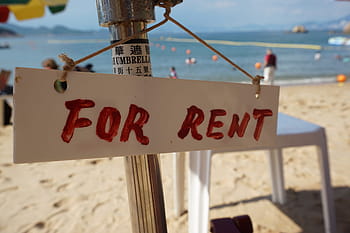Month: August 2020
A landmark case against Uber and Lyft is playing out in California courts that could fundamentally challenge their business model. Proposition AB5 would require companies like Lyft and Uber to reclassify their drivers from independent contractors, as they are today, to employees. As a result, both companies have threatened to pull out of California altogether as they simply cannot comply with the ruling. Their business model isn’t built for that structure. The economics of ride hailing don’t contemplate having W2 employees. If this was the case, fare’s would rise substantially across the board, and demand would likely fall. That said, they are already prepping to lose this fight and this will require a radically different approach to how their business functions moving forward. It’s been surmised that they will pivot to a franchise model whereby independent franchisees will license the ride hailing companies software as well as brand IP while making drivers now regular employees. If you think this is a step backwards, you’re right. Under this model, you’ll end up with potentially thousands of black car and taxi companies using the software. This is exactly how the model existed before the Uber’s of the world came around and, I’m afraid, won’t even address the larger issue.
I’ve been away from NYC the last couple of months as the pandemic unfolded but recently came back to a different experience. As I left the terminal at LaGuardia on a weekday morning there were no taxi lines and no one hustling me for a ride. It was strange but also somewhat peaceful. After a record setting 25 min into Manhattan I arrived downtown. I spent the afternoon walking around a few different neighborhoods to get a feel for how things had changed. Some shop owners told me business was slower for sure, and yet others said it’s about normal for August. Some said they had been able to negotiate rent concessions, others had not. People were in less of a rush and the tourists were gone. The parks were more alive than I’ve ever seen as people sat out on blankets with friends and their 4-legged friends.
It’s true innovation when a business builds something for themselves and then realizes there’s a potential application beyond internal needs.
Take, for example, a company like Apple that started predominantly as a hardware company making computers and other peripherals. Years later, when they created the App store it was originally conceptualized as a platform to deliver programs directly developed by Apple. But they realized that there was a much bigger opportunity here to create a marketplace model and the App store of today was born. In 2019, this line of Apple’s business contributed over a half a trillion dollars in billings and further reinforces the stickiness of their hardware business. If Apple had kept this ecosystem truly closed for fear of losing control, then their market penetration would be significantly less.
This is a period of immense uncertainty but also a time for great opportunity. Some of the most well known companies were created during past periods of volatility. Apple and Microsoft were born during the OPEC induced recession of the 1970’s. Netflix survived the Dot.com bubble and came out stronger than ever, and Airbnb was born during the 2007-2008 recession. Fast forward to today and there seems to be two schools of thought on investing during the current Covid-19 pandemic. Either it’s batten down the hatches and conserve cash or let’s use this as an opportunity to double down on our winners and also invest in other startups that are booming due to stay at home restrictions. As we’ve seen in the public markets there are multiple bulls out there in certain sectors and the same theme applies to venture.
Venture capitalist Marc Andreessen coined the term “Software is eating the world” nearly 10 years ago. His argument that software would be at the heart of every business moving forward could not have been more astute. For example, Amazon’s not a retailer; their primary capability is their software technology enabling sellers around the world to get their products to consumers. The same could be said for their AWS cloud business; again a software play. Uber, Google, Facebook, Netflix, and to some extent Apple’s app store business, are all examples of companies that are fundamentally software first. Interestingly, this same software has empowered a foundational shift in business model. It has enabled disintermediation. The complex network of intermediaries that have existed historically have been circumvented which has led to the world of everything being direct-to-consumer (D2C) or direct to source. Many think of D2C as mainly having an impact on consumer goods, but the theme permeates into numerous industries. Here are some examples:

You lease your car. You rent your apartment. You subscribe monthly to Netflix and you rent your clothes from Rent the Runway. But would you rent your furniture? There’s a slew of startups that are betting you will. Companies like Fernish, Feather, Oliver Space and CasaOne are a few that allow customers to rent their furniture and return when they no longer need. The concept isn’t new; legacy players such as Rent-a-Center ($RCII) and Aaron’s ($AAN) have been doing this for years. The difference now is that there hasn’t been an updated brand narrative. Rental furniture has historically been aimed at middle America, subprime borrowers as an alternative to those who weren’t candidates for financing. The loans were borderline usurious or prices were marked up to cover the credit risk.
